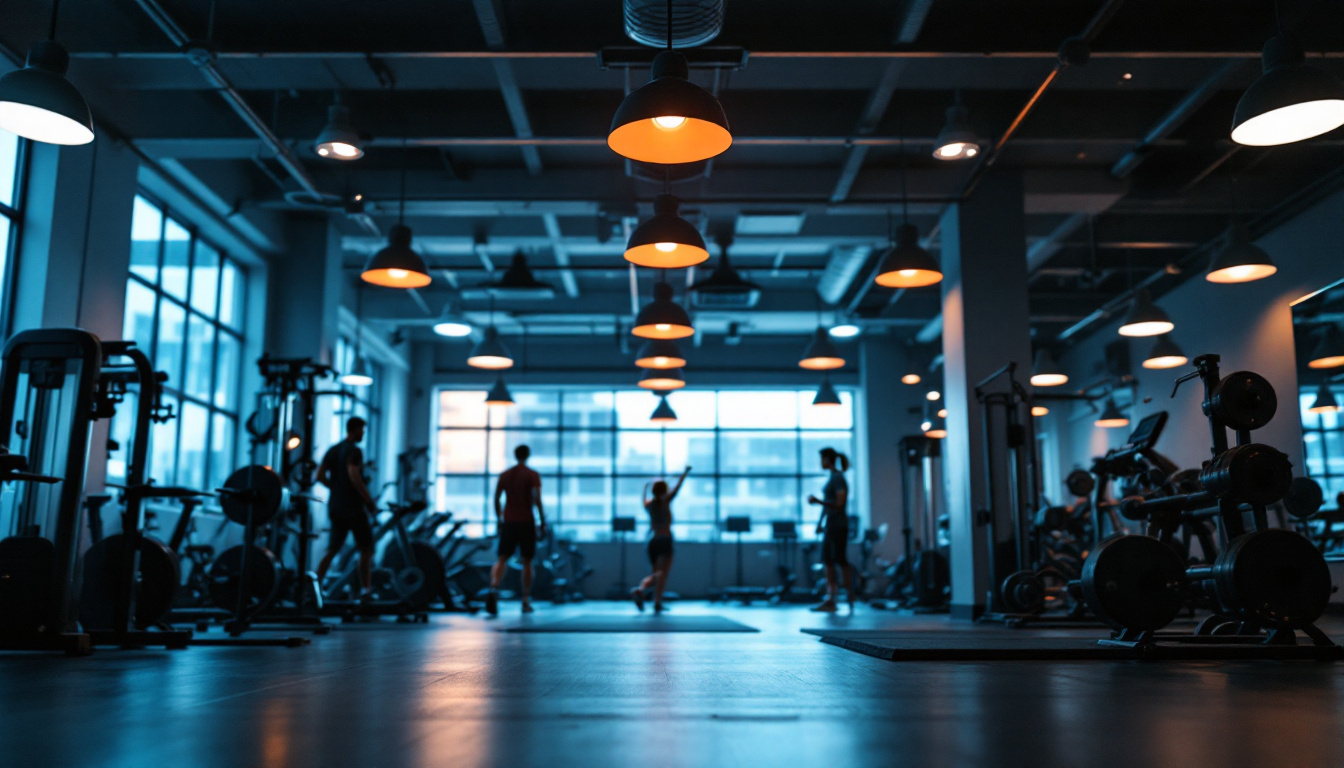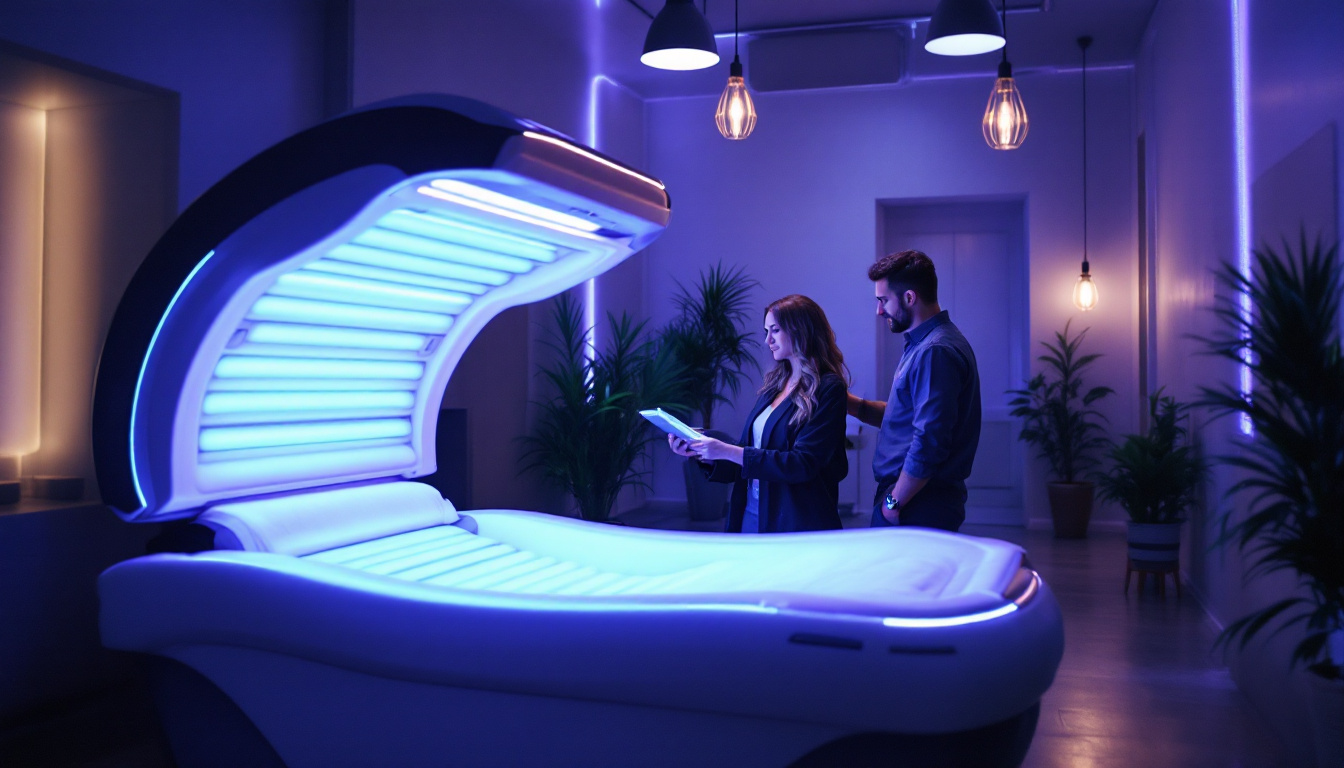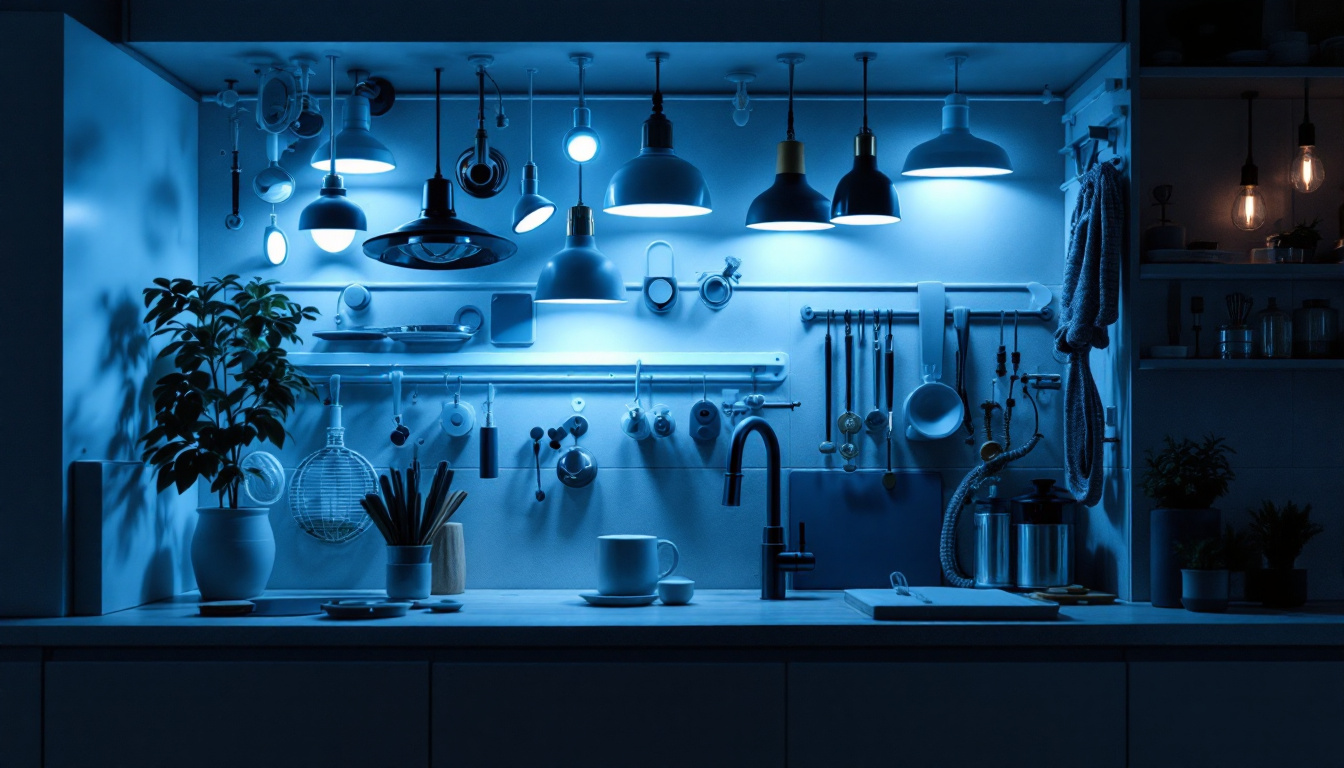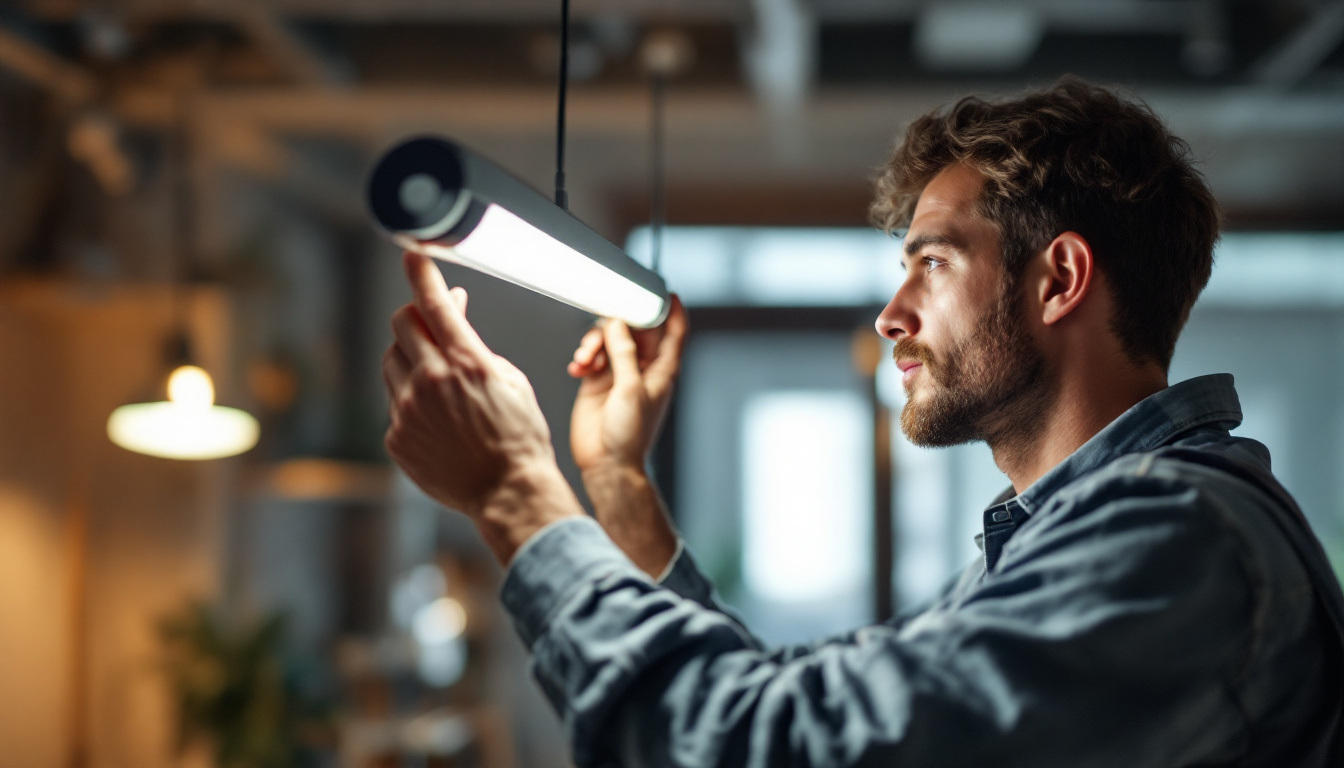
In the realm of commercial lighting, gyms present unique challenges and opportunities for lighting contractors. The right lighting can enhance the workout experience, improve safety, and contribute to the overall aesthetic of the facility. This article explores proven methods and best practices that lighting contractors can employ to effectively illuminate gym spaces.
Before diving into specific lighting solutions, it is essential to understand the unique requirements of gym environments. Gyms are multifaceted spaces that serve various purposes, from weightlifting areas to group fitness studios. Each area demands a tailored approach to lighting. The right lighting can enhance the overall experience for gym-goers, influencing their motivation and performance while also ensuring safety and comfort.
Moreover, the aesthetic aspect of lighting cannot be overlooked. A well-lit gym not only serves functional purposes but also contributes to the overall ambiance, making the space more inviting. This is particularly important in areas where members gather, such as lounges or waiting areas, where softer lighting can create a welcoming environment. By considering both functionality and aesthetics, gym owners can significantly enhance the user experience.
Different activities require different lighting intensities and qualities. For instance, weightlifting areas benefit from bright, even lighting to ensure safety during exercises. Conversely, yoga studios may require softer, ambient lighting to create a calming atmosphere. Understanding these nuances allows lighting contractors to design effective lighting plans. Additionally, areas designated for high-intensity workouts, like spin classes or circuit training, may require adjustable lighting that can shift from bright and energizing to softer tones, depending on the phase of the workout. This adaptability can help in creating an engaging and motivating environment for participants.
Furthermore, the color temperature of the lighting plays a crucial role in setting the mood. Cooler, daylight-like temperatures can invigorate and energize users during cardio sessions, while warmer tones can promote relaxation and focus during stretching or meditation practices. By integrating a variety of lighting options, gym owners can cater to the diverse needs of their clientele, ensuring that every workout space is optimally lit for its intended purpose.
Lighting contractors must also be aware of local building codes and standards that govern gym lighting. Compliance with these regulations ensures not only the safety of gym users but also the longevity of the installation. Familiarity with standards such as the Illuminating Engineering Society (IES) guidelines can help contractors deliver compliant and effective lighting solutions. Additionally, energy efficiency standards are becoming increasingly important, as gyms look to reduce operational costs and their carbon footprint.
Incorporating energy-efficient lighting options, such as LED fixtures, can significantly decrease energy consumption while providing high-quality illumination. These fixtures not only last longer than traditional lighting but also offer the flexibility of dimming and color temperature adjustments, which can be particularly beneficial in multi-purpose gym areas. By staying updated on both safety and energy regulations, lighting contractors can ensure that their designs are not only compliant but also forward-thinking, aligning with the growing trend towards sustainability in fitness facilities.
The choice of lighting fixtures is crucial in achieving optimal gym illumination. Various types of fixtures can be utilized, each with its advantages and applications.
LED lights have become the go-to choice for gym lighting due to their energy efficiency, longevity, and versatility. They provide bright, focused light while consuming significantly less energy than traditional incandescent or fluorescent bulbs. Additionally, LED fixtures come in various styles, allowing for creative design solutions. The ability to dim LED lights also allows gym owners to adjust the ambiance for different activities, such as high-energy group classes or calming yoga sessions, enhancing the overall experience for gym-goers.
Moreover, LED technology has advanced to include smart lighting options that can be controlled via mobile apps or integrated into existing gym management systems. This feature not only allows for easy adjustments but also enables gym owners to monitor energy consumption and optimize lighting schedules, further reducing operational costs. With the added benefit of a longer lifespan—often lasting up to 25,000 hours—LEDs are a sustainable choice that aligns with modern eco-friendly practices.
In large gym spaces, high-bay fixtures are often necessary to provide adequate illumination from elevated ceilings. These fixtures can deliver high lumen output, ensuring that every corner of the gym is well-lit. Conversely, low-bay fixtures are suitable for areas with lower ceilings, offering effective lighting without excessive glare. The strategic placement of these fixtures is essential; for instance, high-bay lights can be positioned above weightlifting areas to illuminate the space without shadows, while low-bay fixtures can enhance the visibility in cardio zones, creating a more inviting atmosphere.
Additionally, the choice between high-bay and low-bay fixtures can also influence the overall aesthetic of the gym. High-bay fixtures often have a more industrial look, which can appeal to certain demographics, while low-bay fixtures can be designed to blend seamlessly into the gym’s interior decor. Furthermore, incorporating fixtures with adjustable beams can allow for targeted lighting in specific workout areas, enhancing safety and performance by ensuring that all equipment is adequately illuminated, thus minimizing the risk of accidents during intense workouts.
Effective lighting design goes beyond simply choosing the right fixtures. It involves a thoughtful approach to placement, layering, and control.
Layering different types of lighting—ambient, task, and accent—can create a dynamic environment that caters to various activities. Ambient lighting provides overall illumination, while task lighting focuses on specific areas, such as weightlifting stations or cardio machines. Accent lighting can highlight architectural features or branding elements, adding to the gym’s aesthetic appeal.
Incorporating natural light into gym design can enhance the overall atmosphere and reduce energy consumption. Strategically placed windows, skylights, or light tubes can bring daylight into the space, creating a more inviting environment. However, it is essential to balance natural light with artificial lighting to maintain consistent illumination throughout the day.
Advancements in lighting control technology have transformed the way gyms manage their lighting systems. Integrating smart controls can enhance energy efficiency and user experience.
Smart lighting systems allow gym operators to adjust lighting levels based on occupancy and time of day. For example, dimming lights during off-peak hours can save energy while still providing adequate illumination. Additionally, motion sensors can automatically turn lights on or off as users enter or exit specific areas, further optimizing energy use.
Creating programmable lighting scenes can enhance the versatility of a gym’s lighting system. For instance, a fitness studio can have different lighting settings for yoga classes, high-intensity workouts, or dance sessions. This flexibility not only improves the user experience but also allows gym owners to tailor the ambiance to specific activities.
Safety is paramount in gym environments, and lighting plays a crucial role in ensuring that users feel secure while exercising.
Properly illuminating pathways, entrances, and exits is essential for safety. Well-lit areas reduce the risk of accidents and help users navigate the space confidently. Additionally, emergency lighting systems should be in place to provide illumination during power outages or emergencies.
Glare and shadows can pose safety hazards in gyms, particularly in areas with heavy equipment. Lighting contractors should carefully consider fixture placement and type to minimize these issues. Utilizing diffusers or indirect lighting can help create a more even light distribution, reducing glare and enhancing visibility.
Once a lighting system is installed, ongoing maintenance is critical to ensure its longevity and performance. Regular checks and updates can prevent issues that may arise over time.
Conducting routine inspections of lighting fixtures and controls can help identify potential problems before they escalate. This proactive approach not only extends the lifespan of the lighting system but also ensures consistent performance and safety.
As technology evolves, lighting contractors should stay informed about new products and solutions that can enhance gym lighting. Upgrading to more efficient fixtures or advanced control systems can provide significant benefits in terms of energy savings and user experience.
Examining successful gym lighting projects can provide valuable insights and inspiration for lighting contractors. These case studies highlight innovative approaches and effective solutions that have transformed gym environments.
At an urban fitness center, the lighting contractor implemented a combination of LED high-bay fixtures and natural light sources. By installing skylights and large windows, the gym benefitted from abundant daylight, reducing reliance on artificial lighting. The result was a vibrant, energizing atmosphere that attracted more members.
A community recreation center faced challenges with glare and uneven lighting in its multipurpose gymnasium. The lighting contractor addressed these issues by using indirect lighting fixtures and strategically placing task lights at key activity zones. The changes not only improved visibility but also enhanced the aesthetic appeal of the space.
Lighting contractors play a vital role in shaping the gym experience through effective lighting design and implementation. By understanding the unique requirements of gym environments, choosing the right fixtures, and employing innovative lighting strategies, contractors can create spaces that enhance safety, functionality, and ambiance.
As gyms continue to evolve, staying informed about the latest trends and technologies in lighting will be essential. By embracing these proven methods, lighting contractors can ensure that they meet the demands of modern fitness facilities while providing exceptional service to their clients.
Ready to elevate your gym lighting projects with superior quality and value? Look no further than LumenWholesale. We provide lighting contractors with an extensive selection of spec-grade lighting products designed to meet the diverse needs of modern fitness facilities. With our competitive wholesale pricing and commitment to cutting out the middleman, you can access top-tier lighting solutions that fit your budget. Plus, with the convenience of free shipping on bulk orders, LumenWholesale ensures you receive premium lighting at the best price, without any hidden fees. Enhance your gym lighting designs today and experience the best value in wholesale lighting with LumenWholesale.

Discover the secrets behind tanning bed lighting as expert contractors reveal the technology and design that create the perfect glow.

Discover the essentials of low voltage cabinet lighting with our comprehensive handbook tailored for lighting contractors.

Discover the essential insights and expert tips every lighting contractor needs to know about tube lights.

Discover how Leviton is revolutionizing the lighting industry with innovative solutions.